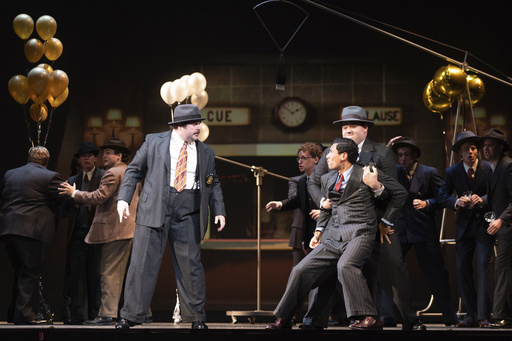
Thus, Bates collaborated with librettist Gene Scheer to bring to life Chabon’s intricate story about two young Jewish cousins navigating life before and after World War II. Now, after six years since Bates was first inspired by the novel, the opera is set to debut at the Metropolitan Opera, marking the opening of the upcoming season in September 2025.
Before that, the world premiere is scheduled for Friday at the Jacobs School of Music on the Indiana University campus in Bloomington. Initially, this premiere was slated for the Los Angeles Opera, but that venue ultimately backed out due to financial considerations.
Bloomington emerged as a fitting choice for the premiere, especially given the nearly 300 vocal students at the school and the Musical Arts Center, constructed in 1972, which was designed with a similar aesthetic to the Metropolitan Opera stage. “The space and technology at the Jacobs School were very appealing to the Met in terms of how the opera would present here,” noted Catherine Compton, who manages the opera and ballet theater program at the school.
Compton also highlighted how beneficial it has been for the students to collaborate with the Metropolitan Opera’s creative team during their residency. “It’s been wonderful to see the students grow and to watch the creative team adapt their process to engage with our students effectively,” she remarked.
The creative collaboration continues, as Met staff are expected to return to Bloomington in January to work on another upcoming opera commission, “In the Rush,” composed by Carlos Simon, with a libretto crafted by playwright Lynn Nottage alongside her daughter, Ruby Aiyo Gerber.
The commission of “Kavalier & Clay” was sparked when Peter Gelb, general manager of the Met, attended Bates’ earlier opera, “The (R)evolution of Steve Jobs,” in 2017 in Santa Fe, New Mexico. Subsequently, the Met’s dramaturg, Paul Cremo, introduced Bates to Scheer, a seasoned librettist noted for skillfully adapting Melville’s “Moby Dick” into an operatic format, a work that the Met is preparing to showcase next March.
Cremo praised Scheer’s ability to distill the essence of a complex narrative into operatic form, explaining, “I refer to ‘Moby Dick’ as a model for new librettists because it captures the core effectively.” He acknowledged that “Kavalier & Clay” meanders through various historical contexts, necessitating a skilled adaptation process.
After trimming down some of the book’s extensive details, including a 40-page detour to Antarctica, Scheer focused on the primary characters: Joe Kavalier, a young man fleeing Czechoslovakia on the brink of the Holocaust, and his cousin Sammy Clay, a Brooklyn native chasing dreams of fame, all while grappling with his sexuality and a complicated relationship with a charming actor.
Together, they collaborate to create a sensational comic book character named The Escapist, using Sammy’s penchant for storytelling and Joe’s artistic skill.
Bates and Scheer recognized three unique worlds within the novel, each inspiring distinct musical styles. “The World War II setting presents a somber atmosphere with the Kavalier family facing grim circumstances, reflected in a dark soundscape featuring drums and mandolins,” Bates explained. “Then, we shift to the lively big band sound of 1940s New York, infused with swing and jazz, before transitioning into an avant-garde electro-acoustic aesthetic as they delve into art.”
Bates noted their careful separation of these audio realms initially, stating that the opera’s excitement builds as Joe experiences a transformative journey, leading to a melding of these different sound worlds.
Director Bart Sher faces the complex task of visually distinguishing and eventually conflating these realms, collaborating with 59 Productions, a company acclaimed for their creative projection and animation work. “One challenge for ‘Kavalier & Clay’ lies in depicting simultaneous spaces and times,” Sher explained. “The audience may witness the characters working at Empire Toys while also observing their family struggling in Prague, all while they express these experiences through The Escapist.”
“Achieving harmony between these three elements alongside the music and singing is what really makes this piece special,” he concluded.
